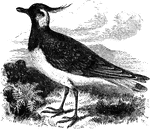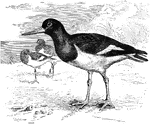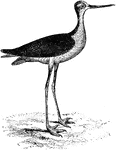Clipart tagged: ‘shore birds’

Avocets Head and Foot
"Another small family, characterized by the extreme length of the slender legs, and the extreme slenderness…

Avocets
"Recurvirostra. Avocets. Bell slender, more or less recurved, then the upper mandible hooked at the…

Heron
Herons are found on the edges of rivers, lakes and marshes and live on fishes, reptiles and sometimes…

European Lapwing
"The glareoles (Glareolidae) are a remarkable Old World form, like long-legged swallows, wth a cuckoo's…

European Oyster-catcher
"Haematopus ostrilegus. European Oyster-catcher. (oyster-opener would b a better name, as oysters do…

Stilt
"Himantopus. Stilts. Bill extremely slender, but not flattened, nor turned up, nor hooked; longer than…